#Cheffin' on a Monday
Explore tagged Tumblr posts
Text
Made some extra good ravioli tonight. Hand-rolled from dough, minced Italian herbs (thyme, sage, oregano & rosemary), fresh balsamico feta salad on the side to balance out the full pasta flavors 🫰



11 notes
·
View notes
Text
Madrid Week 5: I been in the kitchen, whippin, whippin (cheffin?)
Holaaaa a todxs otra vez! Niko back here with week 5 of the Madrid blog, sorry that I’m a day late :). This week’s blog will have less to do with Madrid/Spain/Europe/culture, and more to do with a little personal project of mine while abroad: learning how to cook (well).
I’ve always had cooking as a part of my life, and that’s thanks to my Mom, who always made the most delicious meals growing up from all sorts of cuisines. On a typical Sunday evening, my Mom would pick a recipe — either something new, or a family classic — and enlist me and my sister’s help in preparing it for the whole family. I learned a good amount this way: how to dice an onion, how to chop an onion into slivers, how to caramelize an onion… along with various other skills that don’t have anything to do with onions.
In high school, right before COVID hit, I decided to teach myself how to bake bread. It seemed like a kind of impossible task, of sorts — something that only professional bakers who woke up at 5am knew how do to, or grandmas who somehow always had the skill. I don’t remember how my first loaf turned out, but I’m guessing it was just good enough, because I found a new passion in baking from that point onward. I kept challenging myself to go for more complicated pastries, culminating in my proudest buttery achievement: a 3 day baking marathon that yielded some perfectly flaky homemade croissants.
In baking, I found joy in the precise imprecision of it all.
Many people I know have told me that they see baking is a science; All of the ratios have to be perfect; There’s no room for error. While it’s true that if you add too much flour you’ll dry out your dough, or if you overload on the butter you’ll end up with a crispy puddle instead of a cookie (that also destroys your baking sheet) (speaking from firsthand experience), the more I practiced, the more I was able to bake using feeling and intuition instead of trusting a recipe. I could tell what dough felt like when it needed a little more kneading, or what it looked like when it had risen just enough. Through baking traditional Greek breads and desserts, I also found a new avenue for connection to my heritage. The gratification I received when I got a delicious final product — and one that I could share with family and friends — was all that I needed to continue having fun with the hobby.
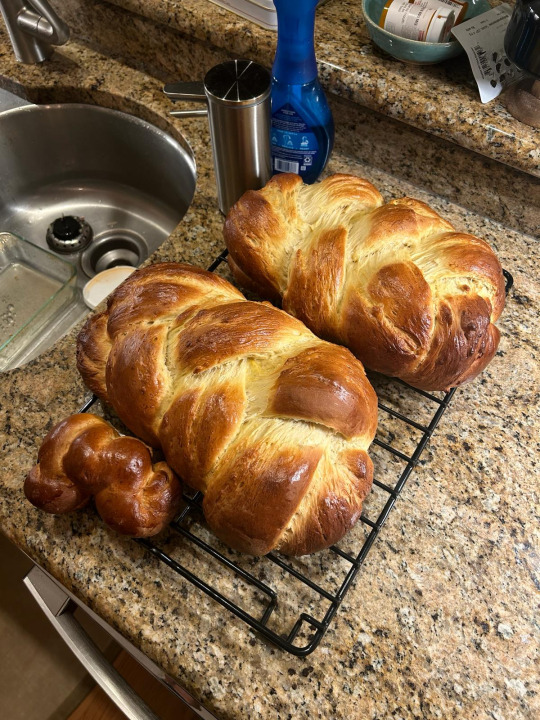
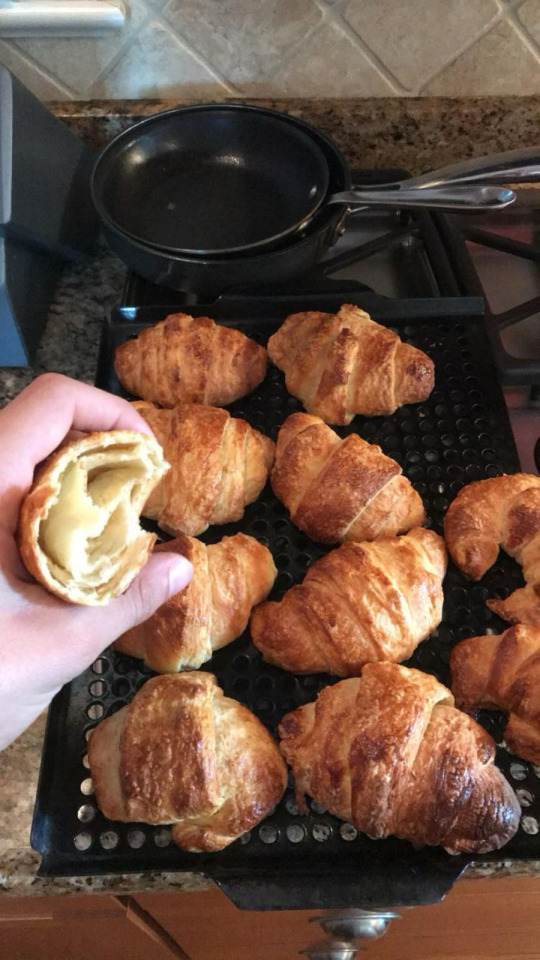
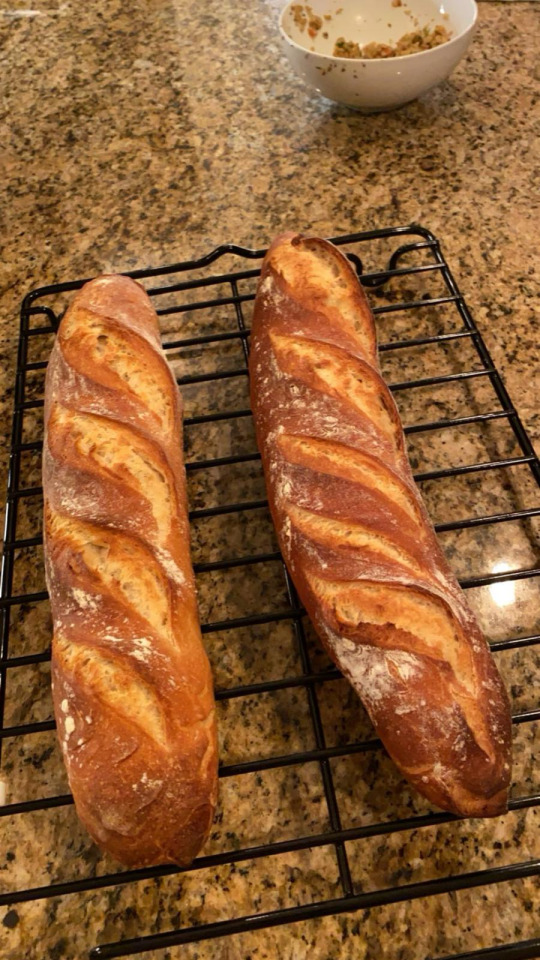
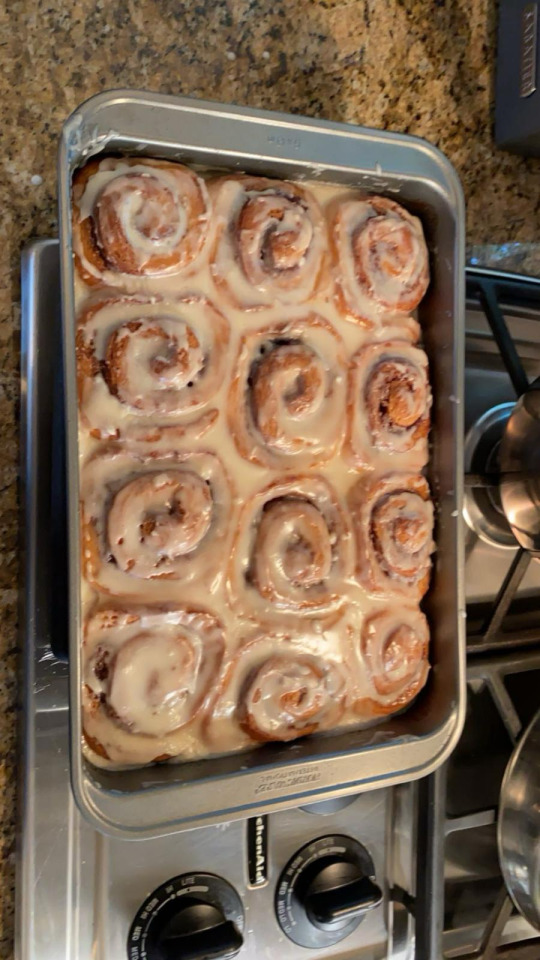
Now, flash forward a few years, I’m a freshman in college. I’m in a dorm (Bursley T_T ), no kitchen access in sight, and eating exclusively in dining halls. Baking fell to the wayside, aside from the casual holiday cookie produced during breaks. Flash forward another year, I’ve got an apartment with a very functional kitchen — but now I’ve overloaded myself with classes and other extracurriculars, bought a dining plan, and treated mealtimes as activities to be completed as efficiently as possible so that they wouldn’t interfere with everything else I had to do in a day.
Needless to say, I wasn’t doing much baking, and the same was true with cooking — once a week I’d maybe make some dry chicken breast in a pan with some crudely chopped red bell peppers and call it a night. Last semester, fall of Junior year, at the peak of my business with school and extracurricular responsibility, I found myself in the kitchen even less.
I was satisfied with this rhythm. I enjoyed dining hall food for the most part (much to the surprise of most friends), and I really was saving time that I spent on other things. However, part of me looked at friends that were regularly home-cooking delicious, healthy meals for themselves (or for their entire co-op) and felt a pang of jealousy. Mealtime can be a sacred ritual for connection — both with yourself and with others — if you want it to be, and that was something I wanted to be able to foster.
The turning point in this cooking journey revolved around Monday night game night, the CFB championships, Michigan vs Washington. My cousin had invited me and my sister over to watch the game, with the promise that he would chef us some of his world famous confit chicken wings. My cousin is probably one of the best freehand chefs that I personally know. If you give this man some simple ingredients and a couple of spices, he’ll pull out some random cooking technique I thought only existed in high end French bistros and make some truly creative — and delicious — food, based solely on his experience and earned intuition. I think of him and flavors kind of like Remy from Ratatouille with the cheese and the strawberry, y’all know what I’m talking about.
This was the type of cooking that I had always sought after but never figured I was capable of without going to culinary school. Impressive, but something that only professional chefs who woke up at 5am knew how to do, or grandmas who just always had the skill…
Before leaving my cousin’s house (and after Michigan had won the natty 😎), I asked him how he learned to cook freehand so well. He told me that, although he had always been around cooking in his family, his skills truly blossomed when he was abroad in London for a year — when he was forced to cook for himself. He mastered simple dishes, without using recipes — pan seared chicken breast, roasted vegetables — which served as a launching pad to trying more and more complicated dishes, each time committing the cooking experience (and result) to memory and drawing upon it for the next plate.
So, flash forward to present day. Essentially, I said “Bet.”
I’ve got a bunch more time now that I’m abroad, and groceries here are significantly cheaper — meaning I can get more ingredients at a higher quality and set aside a few hours to truly explore. The first week or two, I was pretty much just doing chicken and red bell peppers, and maybe some rice. But since then, I’ve started exploring a little more — risotto, Bolognese, spatchcock chicken, basted steak — and the process has been incredibly enjoyable. I can feel some sense of intuition forming, and I find myself relying on recipes less and less with each meal cooked — having my baking experience as a backdrop gives me confidence that I'm on the right path.

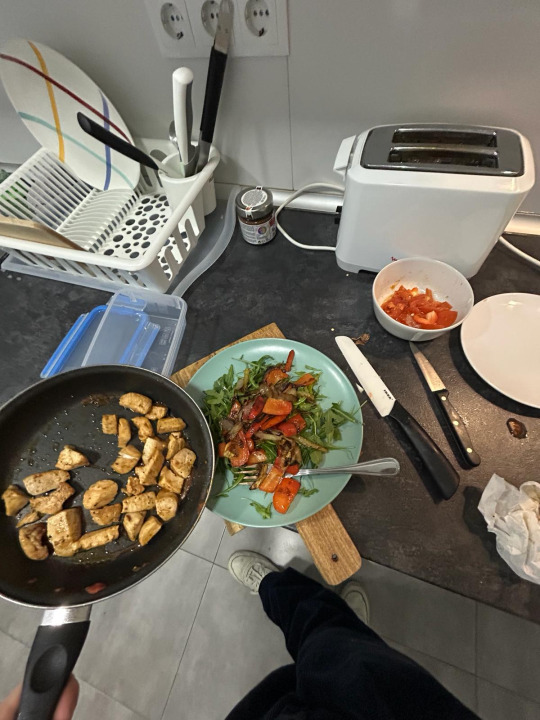

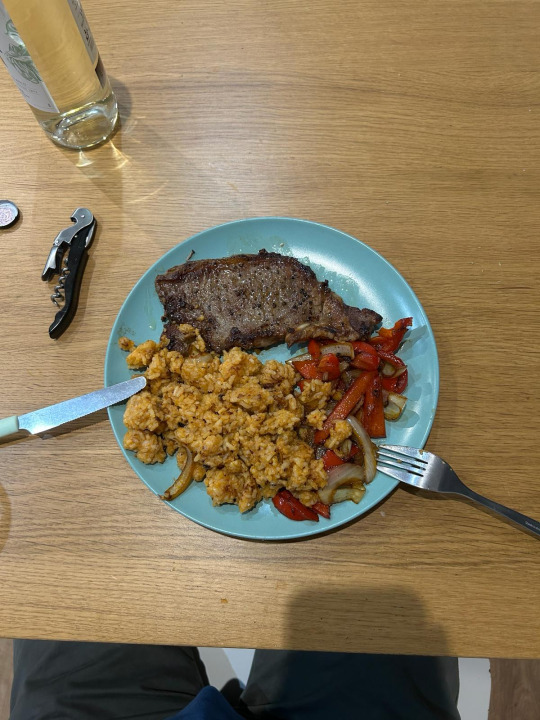
dishes from my first week or two cooking freehand
Those that know me well know that I find a lot of pleasure in learning a new skill. To be honest, I do a lot of random stuff that doesn't really have much of a common thread, which is why I’m somewhat of a “Jack of All Trades, Master of None”. Cooking freehand is the newest addition to that list of random skills, but I think it’s one that’s here to stay. Not only is it fun and delicious, but incredibly utilitarian.

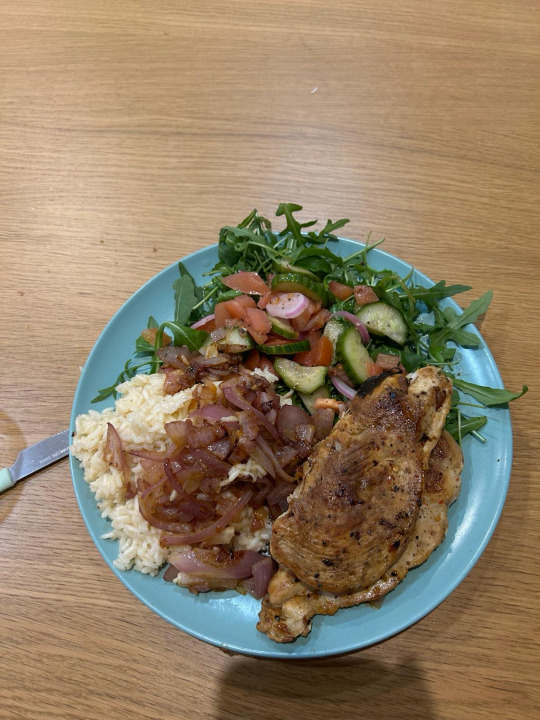



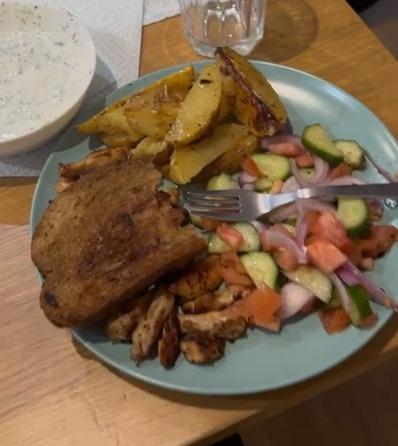

In the words of my cousin: “It means you’ll never have to eat bad food... Not everyone wants your homemade candles or scarves, but everyone can f*ck up a home cooked meal.”
Facts.
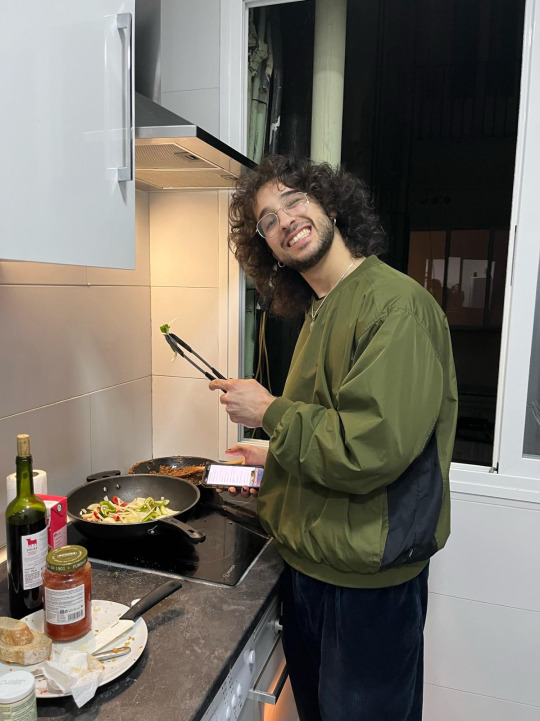
The biggest item on my food to-cook list is to make Avgolemono soup with homemade chicken broth, which is a Greek soup dish that holds a special place in my heart — one that my grandma made all the time. Stay tuned for the results in a future blog. Per usual, check out the image descriptions for a little inside scoop on the meals I've cooked so far.
In other news this week, I saw one of my favorite DJs Interplanetary Criminal, continued on with classes, and some friends from Arlington VA, my hometown, visited for the weekend from their other study-abroad-cities in Europe (including Emma, who's house I stayed at in Granada!).
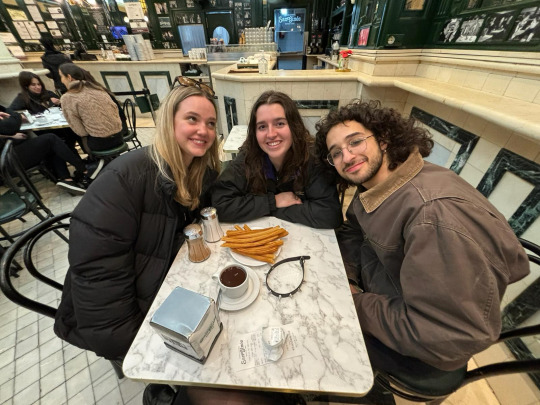
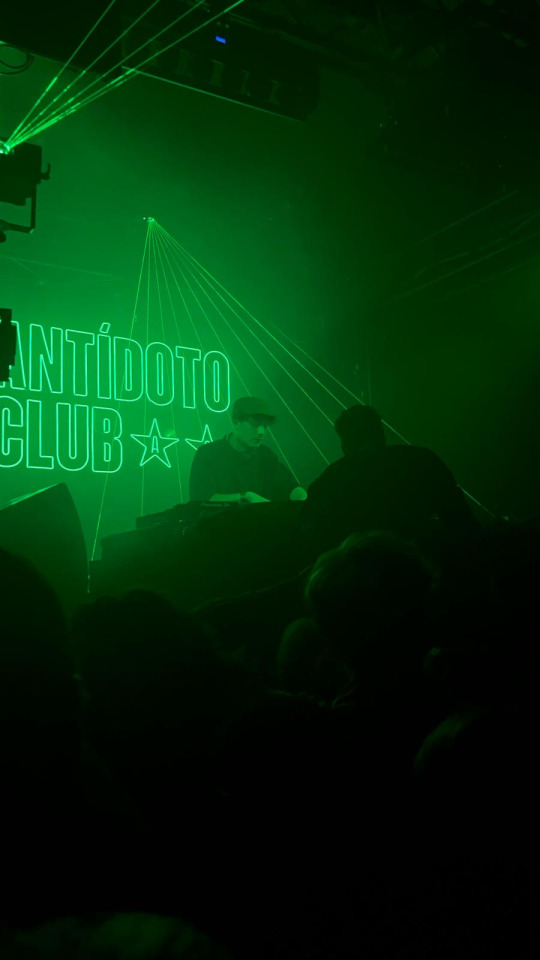

See you all again next week!
Hasta ahora,
Niko Economos
Aerospace Engineering
Universidad Carlos III de Madrid
Madrid, Spain
2 notes
·
View notes
Text
Lost Giacometti Drawings Found in London Antique Shop—and the 9 Other Biggest News Stories This Week
Catch up on the latest art news with our rundown of the 10 stories you need to know this week.
01 Never-before-seen drawings by Alberto Giacometti have been discovered in the holdings of a London antique shop.
(via The Guardian)
The Giacometti drawings, until recently presumed lost, were unearthed amongst piles of antiques and paintings belonging to the late antique dealer Eila Grahame. The Cambridge auction house, Cheffins, cleared and sold the effects of her shop in 2016, when it found the works. The pencil-sketched portraits included a nude woman and various heads, signed and dated to 1947 but still requiring authentication. A director at Cheffins, Martin Millard, stated that “these drawings have never before been seen by the public.” While the main sale of Grahame’s antiques occurred late last year, Millard expects the pieces will garner interest from museums, galleries, and collectors around the world. The sale, with an estimated price of the drawings at £40,000–£60,000, will occur in mid-October, conveniently following the Tate Modern’s retrospective of Giacometti’s work. All proceeds will be donated to the Art Fund, an art fundraising charity.
02 Overall auction turnover for the first six months of the year is up 5.3% to $6.9 billion from the same period a year ago, according to new analysis by Artprice.
(Artsy)
A report from the art market database showed the market turning a corner after two straight years of first-half drops from 2014’s record high. The U.S. auction market led the recovery, with sales increasing 28% to $2.2 billion in the first six months of the year from the same period in 2016. That rise gives it the largest share of the auction market at 32.4%, ahead of China, last year’s leader. China’s auction market dropped 12% in the first half of the year to $2 billion in turnover, a correction that set it back to second place with 29% of global market share. Post-war and contemporary art continued to grow their market shares in the first half of the year, the report noted. In 2000, they represented 8% and 3% of global auction sales, respectively; as of 2017, those respective shares had risen to 21% and 15%.
03 Russian police detained two members of the feminist punk band Pussy Riot for participating in an unauthorized protest.
(via The Washington Post)
The rally took place outside the Siberian prison where Ukrainian filmmaker Oleg Sentsov is serving a 20-year sentence for conspiracy to commit terror attacks. Sentsov, originally from the Crimean Peninsula—which Russia controversially annexed from Ukraine in 2014—has denied all charges. Sentsov maintains that his conviction by the Russian military court is punishment for his political opposition to the current government. The United States and the European Union have also called for the filmmaker’s release. After parading a “Free Sentsov!” banner during the recent protest, Pussy Riot members Maria Alyokhina and Olga Borisova were brought to a police station under charges that a judge later dismissed (it remains to be seen if the police will refile the charges). Pussy Riot, a mostly anonymous collective, has a history of criticizing the Russian government, with some members receiving prison time for their protests.
04 Martin Roth, former head of London’s Victoria and Albert Museum, died on Monday at the age of 62.
(via BBC News)
Roth directed the museum from 2011 until last year and oversaw shows about such subjects as Alexander McQueen and David Bowie. According to chairman of the museum, Nicholas Coleridge, German-born Roth raised the V&A “to new heights.” The museum, which was founded in 1852, now boasts the title of largest museum of decorative arts and design. With Roth at the helm, it saw record-breaking numbers of visitors, won Art Fund’s 2016 Museum of the Year Award, and worked to establish a presence at the Venice Biennale. He also aided in founding the V&A Research Institute and expanding the museum to parts of Scotland and China. Former Labour Member of Parliament Tristram Hunt, who has taken over the position of V&A’s director, applauded Roth’s “prodigious internationalism & contemporary ambition.”
05 The Museum of Modern Art will deaccession 400 photographs from its collection.
(via ARTnews)
The New York museum will sell the work through Christie’s, over a number of online and live auctions held throughout the next year. The first auction will occur on October 10th. The museum is selling the pieces, by artists such as Walker Evans, Man Ray, Garry Winogrand, because the prints are duplicates, a museum spokesperson told ARTnews. While the sale of work from a museum’s collection can often draw controversy since it generally violates industry guidelines that discourage museums from selling art held “in the public trust,” MoMA’s sale of these photographs falls under an exception to these rules, which permit deaccessioning in order to fund the purchase of more work. All the profits from MoMA’s sale will go to the museum's acquisition fund.
06 Protesting warehouse closures and labor conditions, B&H Photo Video warehouse workers and activists demonstrated outside of Mayor Bill De Blasio’s residence.
(via Hyperallergic)
The upcoming closure of the two Brooklyn warehouses in Bushwick and the Navy Yard will reportedly force more than 300 jobs from the city and into New Jersey, where the company’s operations are set to relocate by the end of the year. The company’s warehouse workers, many of whom are immigrants, have been involved in a nearly two-year labor struggle involving mistreatment and discrimination, prompting a vote to unionize in 2015 and join the United Steelworkers (USW). While they had yet to negotiate their first contract, the USW had filed a complaint to the National Labor Relations Board arguing that B&H was violating federal labor laws. The case has reportedly been dismissed, but critics have maintained that the relocation to central New Jersey belies an effort to avoid dealing with union rights. Demonstrators have faulted de Blasio for failing to prevent the closures and complicity in a union-busting effort (as the city owns the land the warehouse has been renting in the Navy Yard). B&H spokesman Michael McKeon claimed the company is “trying to offer a rational package to those who don’t want to move [to New Jersey] or a severance package to those who don’t,” but many workers who cannot move have stated they can’t make the approximately three-hour commute to the new facilities.
07 An artist spray-painted offensive tweets outside Twitter’s Hamburg office as examples of the hate speech that is often allowed to circulate by the social media company.
(via the New York Times)
“Retweet if you hate Muslims,” one read. Another: “Let’s gas some Jews together again.” They were just two of over 300 homophobic, racist, and anti-Semitic tweets reported by artist Shahak Shapira to the company over six months. He only received nine answers from Twitter, all saying the tweets did not violate the company’s rules. Of the reported tweets, the majority, the artist said, remained on the platform. The chalk protest comes following the passage of a new law, under which social media companies in Germany will be hit with huge fines of up to €50 million should they fail to respond to requests to remove hate speech within 24 hours. Twitter declined to comment on Shapira’s protest but noted that it will “continue to review and iterate on our policies and their enforcement.”
08 Four months after Sotheby’s sold a 60-carat pink diamond for $71.2 million, the auction house is still waiting to collect.
(via ArtsJournal)
The massive diamond, known as “the Pink Star,” was gleefully reported to have been purchased by Hong Kong-based jewelry retailer Chow Tai Fook in a sale that set a new price record for a gem at auction. The press release touted its new name, “the CTF Pink Star,” in honor of the jewelry company’s founder, the late father of its current chairman who placed the winning bid. But in its most recent earnings report, Sotheby’s included a note that the jeweler has until April 2018 to pay. The diamond is still accounted for as part of the auction house’s inventory, Mike Goss, the auction house’s chief financial officer, said in its second-quarter earnings call. The quarterly earnings report noted that the sale will only net the house $500,000 in profit, “after taking into account the associated cost of inventory sales of $70.7 million, which includes amounts due to our partner and other costs related to the sale.”
09 The Montreal Biennial owes $200,000 CAD to artists and small vendors who helped stage its 2016 edition, raising questions about whether it will return.
(via The Globe and Mail)
The 2018 edition of the biennial has been canceled, and it is unclear whether it will return in 2020. It recently released a statement saying it is facing “a precarious future financial situation.” Board chair Cédric Bisson said the deficit stems from decisions by the management team formerly run by Sylvie Fortin, who departed from her director post in January. He cited cost overruns, several sponsorships that fell through, and a failure to meet fundraising targets. Bisson, a venture capitalist, told a Globe and Mail writer that everyone will be paid, but he did not specify when. The biennial closed in mid-January, nearly seven months ago. Public support has not been renewed, since it is anathema to its mission to give grants and then see artists go unpaid.
10 Artist John Currin has painted Jennifer Lawrence for the cover of the September issue of Vogue.
(via the New York Times)
On the cover, one of four to accompany the September issue, Lawrence appears demure, wearing “a simple tan chemise and a Miu Miu patterned fur hat,” according to the Times. Currin, whose work is often erotic, stated that he was “a little scared” creating a cover for Vogue, which is also celebrating its 125th anniversary. “I do worry about decorum,” Currin added. Evoking the 1930s and 1940s pictorial style of magazine illustrations, Currin’s cover exemplifies his style, blending mannerism, absurdism, and a rococo palette. “Fashion was a huge influence on his work early on,” noted Dodie Kazanjian, Vogue contributing editor. This is not the first time Vogue has spotlighted an artist: The work of Salvador Dalí, Giorgio de Chirico, and Andy Warholhave all appeared on the magazine’s cover. Along with Currin’s painting, photographs of Lawrence by Annie Leibovitz, Bruce Weber, and the duo Inez & Vinoodh will feature on covers for the September issue.
—Artsy Editors
Cover image: Swiss sculptor and painter Alberto Giacometti (1901 - 1966) at his studio on Rue Hippolyte Maindron in Paris, France, 1953. (Photo by Michel Sima/Archive France/RDA/Getty Images)
from Artsy News
0 notes